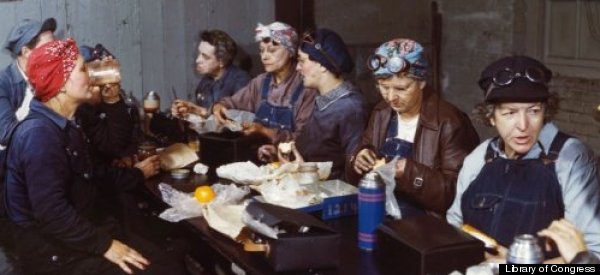Hello again readers! We had an action-packed week, filled with intrigue, pink tulle, and Pieta poses. Scroll down to see what stories piqued people's interest in the past few days...

Image courtesy of Modernbook Gallery.
Tom Chambers' photomontages capture visions we often see in art and dreams but rarely in real life. Somewhere between Baroque fairytales, folk rituals and Renaissance masterpieces, Chambers' photographs give familiar fantasies a sharp-edged realism.

Image courtesy of Bob Carey.
Carey first took a tutu self-portrait in 2003 in an effort to express himself after he and his wife Linda moved to New York. Six months later, Linda was diagnosed with breast cancer. She beat it only to have it recur in 2006, and she has been undergoing chemo ever since. The illness reminded Carey that sometimes, laughter really can be the best medicine.

Image courtesy of AP.
The AP reports: "A new X-ray technique helped experts re-examine what they already knew about 'Still life with meadow flowers and roses' and draw on a growing pool of scholarly Van Gogh research."
After the Kroeller-Mueller Museum in the Netherlands bought the piece in the 1970s, experts posited that the vase was "too exuberant," and the signature (in the top right corner) was very unlike Van Gogh. So in 2003, the museum decided be safe and attribute the painting to an unknown artist. But on March 20, 2012, experts were finally able to verify that it was indeed by the Dutch master.
Keep the Van Gogh verification coming!

Jack Delano, "Women workers employed as wipers in the roundhouse having lunch in their rest room, C. & N.W. R.R., Clinton, Iowa." Photograph, 1943, Courtesy of Library of Congress, carriage trade.
While most of us are familiar with the Dorothea Lange's Depression-era photos, this particular era of American life has been largely forgotten up to now. The rich color images in this series, taken within three years of the invention of Kodachrome, serve to inspire as much as to document this period in American history.

Photo courtesy of Motoi Yamamoto.
Motoi Yamamoto is fascinated by the interconnectedness of living things and salt's literal and symbolic role in the pattern of life and death. He creates stunning labyrinths, tunnels and abandoned staircases out of salt.
In Japanese culture, salt plays many roles. In times of mourning, it is used to purify the body from death after a funeral, and to ward away evil spirits hiding in the dark corners of homes. In Kono Taeko's story "Final Moments," Asari asks Noriko, "What'll happen if you die before I do? Will you shake salt down on me from somewhere in the sky when I come back from your funeral?"
Each intricate piece that Yamamoto makes is eventually washed away, so that no trace of it remains.
So that was our week... How was yours?